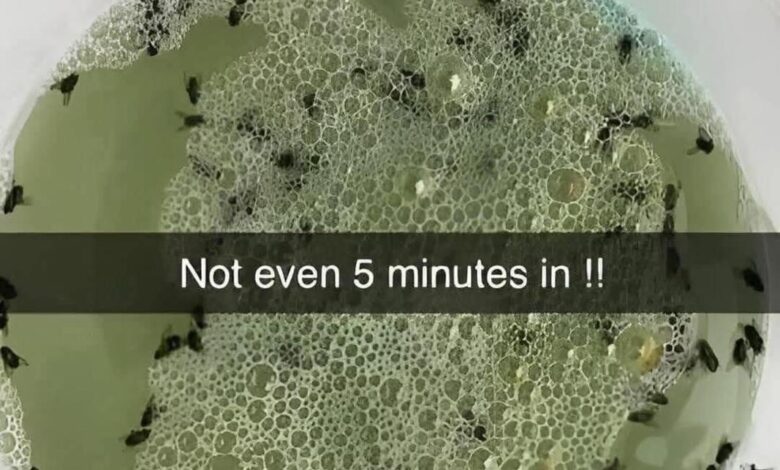
DIY Natural Bug Repellent to Keep Insects Away!DIY Natural Bug Repellent to Keep Insects Away!
Warm weather brings longer days, backyard barbecues, and open windows to let in fresh air. Unfortunately, it also brings an influx of pests. From ants invading your countertops to mosquitoes buzzing around the porch, insects can quickly turn comfort into frustration. Commercial repellents may promise relief, but they often come with downsides: strong chemical odors, skin irritation, environmental concerns, and even risks to pets and children. For households looking for a safer and more sustainable option, a simple homemade solution can be just as effective—sometimes more so—and much kinder to your budget.
One of the most reliable natural repellents combines three everyday ingredients: vinegar, oil, and shampoo. Vinegar acts as a strong deterrent because of its sharp scent, which many insects instinctively avoid. Oil suffocates smaller bugs and creates a physical barrier they are less likely to cross. Shampoo binds the mixture together and adds a light cleaning effect when sprayed on household surfaces. The recipe is simple: mix ½ cup white vinegar, ½ cup olive or vegetable oil, and ½ cup mild shampoo in a bowl or large measuring cup. Whisk until fully blended, then transfer to a clean spray bottle.
This basic blend works well on its own, but you can customize it for stronger protection. Adding lemon juice introduces citric acid, which enhances the repellent effect against ants and spiders. Essential oils also elevate the formula. Citronella is a classic choice for keeping mosquitoes at bay, while peppermint and eucalyptus repel ants and flies. Lavender provides a calming aroma for humans but is disliked by moths and gnats. A few drops of any of these oils not only boost performance but also mask the sharp vinegar scent, leaving your home smelling fresher.
To apply, shake the bottle before each use since natural ingredients tend to separate. Lightly spray the mixture on windowsills, door frames, baseboards, trash cans, and other common entry points for pests. In the kitchen, focus on under the sink, along countertops, and corners where crumbs and moisture attract bugs. Outdoors, spray patio furniture, porch railings, and around doorways. It is safe for most surfaces, but as with any cleaner, test it first on delicate fabrics or unfinished wood to avoid damage.
For best results, reapply daily, especially at dawn and dusk when insect activity peaks. On particularly humid or rainy days, an extra round of spraying may be necessary since moisture can dilute the barrier effect. Unlike chemical sprays that linger for days, natural formulas are gentler, which means consistency is key.
The beauty of this DIY repellent goes beyond convenience. It offers peace of mind for households concerned about toxins. Traditional bug sprays often contain DEET, pyrethroids, or other synthetic chemicals. While effective, these compounds can trigger allergic reactions, headaches, or dizziness in sensitive individuals. Pets, especially cats and small dogs, are also vulnerable to chemical exposure from sprays that cling to furniture or floors. With a homemade blend, you know exactly what is inside the bottle—simple, recognizable ingredients you likely already have in your pantry.
Beyond personal health, natural repellents reduce environmental impact. Conventional sprays and foggers contribute to air pollution, water contamination, and declining populations of beneficial insects like bees. By switching to a vinegar-and-oil solution, you target only the pests that disrupt daily life while leaving ecosystems less disturbed. It’s a small step, but one that adds up when more households choose greener methods of pest control.
Affordability is another advantage. A single bottle of commercial bug spray can cost anywhere from $8 to $15, depending on the brand and formula. A homemade version costs only a fraction of that, with vinegar and shampoo often under $3 each and vegetable oil already sitting in most kitchens. Essential oils, while pricier up front, last for months since only a few drops are needed per batch. The savings become even more apparent when you consider how frequently bug sprays are used during peak pest season.
Some users also find creative secondary uses for this homemade blend. Because of its light cleaning properties, it doubles as a natural surface spray for countertops, sinks, and trash bins. It can freshen up patio furniture between deep cleans and even help reduce mild mildew odors indoors. Its versatility makes it a handy addition to your cleaning arsenal, not just your pest-control routine.
Of course, no method is perfect. For severe infestations—such as termites, bed bugs, or large colonies of carpenter ants—professional intervention is necessary. Natural sprays are best for prevention and everyday nuisance control rather than large-scale extermination. Still, for common household pests like fruit flies, mosquitoes, and ants, this mixture provides a safe and reliable line of defense.
What makes this approach especially appealing is its return to time-tested traditions. Before synthetic chemicals became standard, people relied on natural solutions passed down through generations. Vinegar, oils, herbs, and soaps have long been used to repel insects while keeping homes clean. Modern science may have expanded options, but it has also introduced risks that many families now prefer to avoid.
Choosing a DIY bug repellent is ultimately about balance—protection without compromise. It gives you control over ingredients, reduces exposure to toxins, and respects both your household’s health and the environment. Whether you’re hosting a summer dinner on the patio, keeping ants out of the pantry, or just looking for a safer alternative to chemical sprays, this natural recipe delivers practical results.
By investing a few minutes to mix a batch, you create more than just a bug barrier—you create peace of mind. The next time mosquitoes swarm or ants march across the counter, you won’t have to reach for a can of chemicals. Instead, you’ll have a bottle filled with simple, natural protection that works with your family’s health and the planet in mind.




